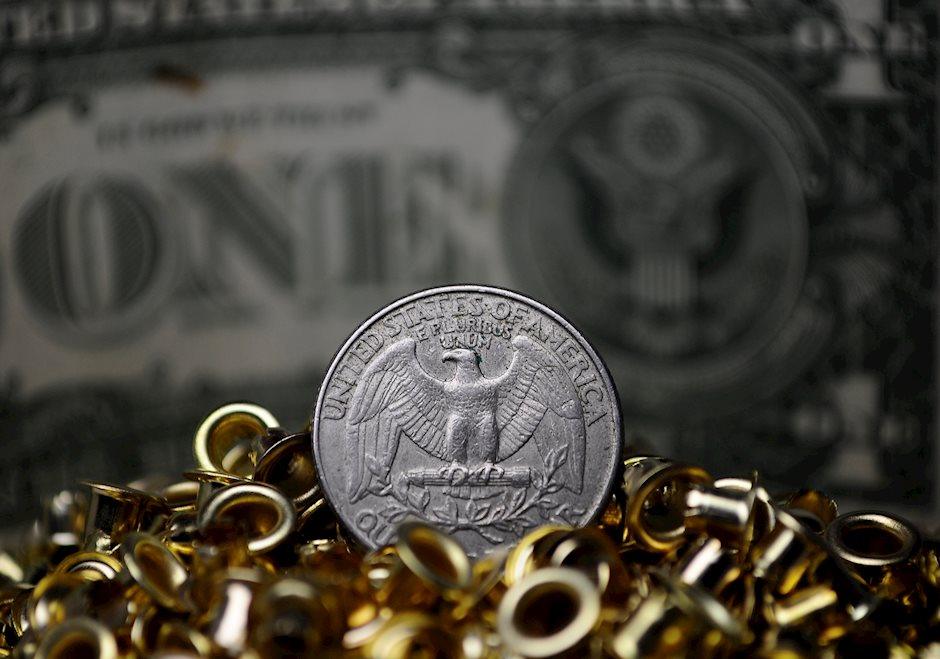US Dollar firms up as positive consumer confidence and JOLTs figures outperform expectations
- US Dollar maintains momentum ahead of Fed decision and labor market update.
- US JOLTs and CB Consumer Confidence figures exceed expectations.
- Fed is expected to stay data-dependent and keep possibilities open for a September cut.

The US Dollar, measured by the DXY index, continues its upward trend. Despite uncertainties hanging in the air over the Federal Reserve’s (Fed) next steps, optimism about the robustness of the US economy is helping the Greenback to gain ground. The forthcoming decision from the Fed due on Wednesday alongside the labor market data expected this week will be pivotal indicators for the market.
The US is starting to show signs of disinflation that strengthen the market's confidence in a possible rate cut in September. However, the overall economy remains resilient as evidenced by the incoming data, which might delay the pivot to rate cuts.
Daily digest market movers: US Dollar firms up following upbeat labor and consumer confidence data
- US consumer sentiment improved slightly in July with the Conference Board's Consumer Confidence Index rising to 100.3 from a downwardly revised 97.8 in June.
- Present Situation Index had a slight decline to 133.6 from 135.5, as Expectations Index climbed to 78.2 from 72.8.
- US Bureau of Labor Statistics (BLS) reported in its Job Openings and Labor Turnover Survey (JOLTS) on Tuesday that on the last business day of June there were 8.184 million job openings.
- That figure exceeded the market expectation of 8.03 million and follows the 8.23 million openings (revised from 8.14 million) reported in May.
- Week’s highlight will be Federal Open Market Committee (FOMC) meeting, which ends on Wednesday with a widely expected hold for interest rates.
- US economy’s strong performance negates immediate need for Fed to lower interest rates, but investors expected the Fed to keep possibilities open for a rate cut at the September FOMC meeting.
DXY technical outlook: Improving signs are observed as the index rebounds toward 20-day SMA
The DXY index, after rebounding from the 200-day SMA, has now successfully climbed above the 20-day Simple Moving Average (SMA). The key signals such as the Relative Strength Index (RSI) and Moving Average Convergence Divergence (MACD), although still remaining on the negative side, are inching toward the positive side, brightening the outlook.
There is noticeable support at 104.50, one more than Monday's 104.30 level, and resistance is eyed at 104.70 and higher around 105.00.
Fed FAQs
Monetary policy in the US is shaped by the Federal Reserve (Fed). The Fed has two mandates: to achieve price stability and foster full employment. Its primary tool to achieve these goals is by adjusting interest rates. When prices are rising too quickly and inflation is above the Fed’s 2% target, it raises interest rates, increasing borrowing costs throughout the economy. This results in a stronger US Dollar (USD) as it makes the US a more attractive place for international investors to park their money. When inflation falls below 2% or the Unemployment Rate is too high, the Fed may lower interest rates to encourage borrowing, which weighs on the Greenback.
The Federal Reserve (Fed) holds eight policy meetings a year, where the Federal Open Market Committee (FOMC) assesses economic conditions and makes monetary policy decisions. The FOMC is attended by twelve Fed officials – the seven members of the Board of Governors, the president of the Federal Reserve Bank of New York, and four of the remaining eleven regional Reserve Bank presidents, who serve one-year terms on a rotating basis.
In extreme situations, the Federal Reserve may resort to a policy named Quantitative Easing (QE). QE is the process by which the Fed substantially increases the flow of credit in a stuck financial system. It is a non-standard policy measure used during crises or when inflation is extremely low. It was the Fed’s weapon of choice during the Great Financial Crisis in 2008. It involves the Fed printing more Dollars and using them to buy high grade bonds from financial institutions. QE usually weakens the US Dollar.
Quantitative tightening (QT) is the reverse process of QE, whereby the Federal Reserve stops buying bonds from financial institutions and does not reinvest the principal from the bonds it holds maturing, to purchase new bonds. It is usually positive for the value of the US Dollar.
Author

Patricio Martín
FXStreet
Patricio is an economist from Argentina passionate about global finance and understanding the daily movements of the markets.

















